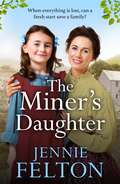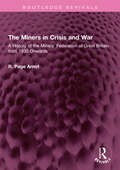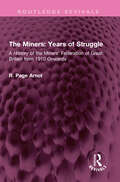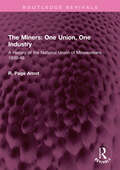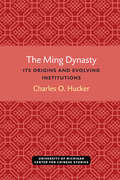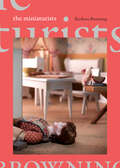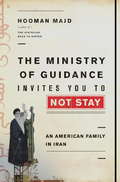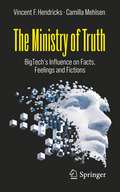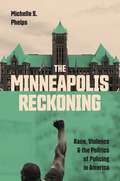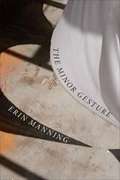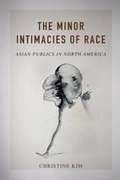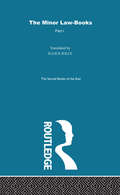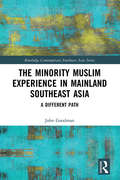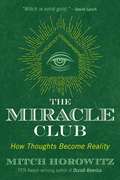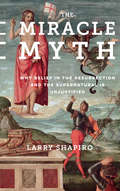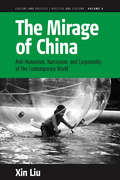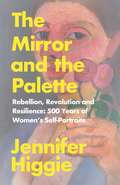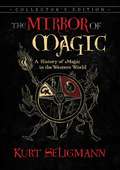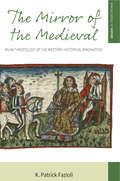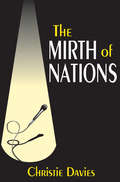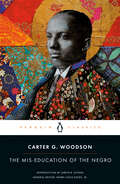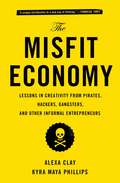- Table View
- List View
The Miner's Daughter: The Families of Fairley Terrace Sagas 2 (The Families of Fairley Terrace #2)
by Jennie FeltonThe Miner's Daughter is the second heartrending saga in Jennie Felton's Families of Fairley Terrace series, in the grand tradition of Katie Flynn, Dilly Court and Josephine Cox, of one woman's quest for happiness after a bitter tragedy, filled with romance, drama and triumph in adversity.When everything is lost, can a fresh start save the Day family?When Annie Day at number four, Fairley Terrace, loses her beloved husband in a tragic mining disaster, she cannot afford the luxury of grief. For now she must find a way to support herself and her two young daughters, Kitty and Lucy, and marriage to widower Algernon Pierce seems to be the answer to Annie's prayers.For a time, all is well. But beneath her new husband's respectable veneer, lies a darkness which deepens as the years roll by. Annie begins to fear for her daughters' futures, particularly vibrant, headstrong Lucy, whose defiance of Algernon alters the course of their lives for ever...*Includes bonus material from the author.*Don't miss Jennie's Families of Fairley Terrace series, which began with Maggie's story in All The Dark Secrets and continued with Lucy's story in The Miner's Daughter, Edie's story in The Girl Below Stairs, Carina's story in The Widow's Promise and Laurel's story in The Sister's Secret.
The Miner's Daughter: The second dramatic and powerful saga in the beloved Families of Fairley Terrace series (The Families of Fairley Terrace #2)
by Jennie FeltonThe Miner's Daughter is the second heartrending saga in Jennie Felton's Families of Fairley Terrace series, in the grand tradition of Katie Flynn, Dilly Court and Josephine Cox, of one woman's quest for happiness after a bitter tragedy, filled with romance, drama and triumph in adversity.When Annie Day at number four, Fairley Terrace, loses her beloved husband in a tragic mining disaster, she cannot afford the luxury of grief. For now she must find a way to support herself and her two young daughters, Kitty and Lucy, and marriage to widower Algernon Pierce seems to be the answer to Annie's prayers.For a time, all is well. But beneath her new husband's respectable veneer, lies a darkness which deepens as the years roll by. Annie begins to fear for her daughters' futures, particularly vibrant, headstrong Lucy, whose defiance of Algernon alters the course of their lives for ever...Don't miss the rest of the compelling, heartwarming sagas of the Families of Fairley Terrace, which began with Maggie's story in All The Dark Secrets, as well as the short story The Birthday Surprise in the saga collection A Mother's Joy, and Edie's story in The Girl Below Stairs.(P)2015 Headline Digital
The Miners in Crisis and War: A History of the Miners' Federation of Great Britain from 1930 Onwards (Routledge Revivals)
by Robert Page ArnotFirst published in 1961, The Miners in Crisis and War: A History of Miners’ Federation of Great Britain from 1930 Onwards tells the story of two sharply contrasting periods, of world crisis and of world war. The story begins with the Minders’ Federation fallen upon evil days, diminished in numbers, shorn of its former powers of national wage negotiation, divided in counsel and almost whelmed beneath the seismic waves of world economic crisis. Unemployment prevailed, greater than at any time before. The sudden collapse of the cabinet, the formation of the four-party coalition, and the rout of the Labour Party in 1931 shattered these hopes. The climb from the economic abyss of the early thirties is made against a sombre background of the spread of fascism and the approach of war. Then, during the war, the British coal industry and its workers encounter a series of rapid changes, both for better and for worse. The whole main purpose of their trade unions, to maintain and improve the standard of life, is conditioned by the six-year war to such an extent that all come to be merged in a single national union a few months before victory. Thus, in circumstances utterly unforeseen, the old Miners’ Federation, now once more built up in its numbers and in its powers comes to an end after an existence of fifty-five years. This book will be of interest to students of history, sociology, economics and political science.
The Miners: A History of the Miners' Federation of Great Britain from 1910 Onwards (Routledge Revivals)
by Robert Page ArnotFirst published in 1953, The Miners: Years of Struggle is the official history of the British miners, which draws on original sources, moving into the stormy period when the economic bargaining of the million colliery employees with the mine owners became the concern of Parliament and people. The great strike of 1921; the stoppages of 1921 and 1926 (the latter opening with the General Strike); and how successive administrations met those crises – these form an historical matrix from which the present public ownership inevitably emerged. The conflict of ideas and personalities is shown as part of the struggles of these stormy times. This book will be of interest to students of history, sociology, economics and political science.
The Miners: A History of the National Union of Mineworkers 1939-46 (Routledge Revivals)
by R. Page ArnotFirst published in 1979, The Miners: A History of the National Union of Mineworkers 1939-46 describes the events and factors that led to the nationalisation of the coal industry in 1946. The World War had a creative as well as a destructive effect on the industry; it compressed fundamental changes into seven short years. By the end of the war, the federated trade unions had succeeded in bringing about the unification of their industry; and the various county, district and craft associations were themselves also unified in one single national body. Two rival plans emerged during 1945: a coal-owners’ plan, in conjunction with an ‘experts’ report’, approved by Churchill and his Caretaker Cabinet, and Labour’s ‘plan for the coal industry’ which came into force in 1946 as the Coal Industry Nationalisation Act. Anew epoch in management had begun, with a National Coal Board, new industrial relations and a new National Union of Mineworkers. This book will be of interest to students of history, sociology, economics and political science.
The Ming Dynasty: Its Origins and Evolving Institutions (Michigan Monographs In Chinese Studies #34)
by Charles O. HuckerIn the latter half of the fourteenth century, at one end of the Eurasian continent, the stage was not yet set for the emergence of modern nation-states. At the other end, the Chinese drove out their Mongol overlords, inaugurated a new native dynasty called Ming (1368–1644), and reasserted the mastery of their national destiny. It was a dramatic era of change, the full significance of which can only be perceived retrospectively. With the establishment of the Ming dynasty, a major historical tension rose into prominence between more absolutist and less absolutist modes of rulership. This produced a distinctive style of rule that modern students have come to call Ming despotism. It proved a capriciously absolutist pattern for Chinese government into our own time. [1, 2 ,3]
The Miniaturists
by Barbara BrowningIn The Miniaturists Barbara Browning explores her attraction to tininess and the stories of those who share it. Interweaving autobiography with research on unexpected topics and letting her voracious curiosity guide her, Browning offers a series of charming short essays that plumb what it means to ponder the minuscule. She is as entranced by early twentieth-century entomologist William Morton Wheeler, who imagined corresponding with termites, as she is by Frances Glessner Lee, the “mother of forensic science,” who built intricate dollhouses to solve crimes. Whether examining Honey, I Shrunk the Kids, the Schoenhut toy piano dynasty, portrait miniatures, diminutive handwriting, or Jonathan Swift’s and Lewis Carroll’s preoccupation with tiny people, Browning shows how a preoccupation with all things tiny can belie an attempt to grasp vast---even cosmic---realities.
The Minister's Wooing
by Harriet Beecher Stowe Susan K. HarrisFrom the author of Uncle Tom's Cabin, a domestic comedy that examines slavery, Protestant theology, and gender differences in early America. First published in 1859, Harriet Beecher Stowe's third novel is set in eighteenth-century Newport, Rhode Island, a community known for its engagement in both religious piety and the slave trade. Mary Scudder lives in a modest farmhouse with her widowed mother an their boarder, Samuel Hopkins, a famous Calvinist theologian who preaches against slavery. Mary is in love with the passionate James Marvyn, but Mary is devout and James is a skeptic, and Mary's mother opposes the union. James goes to sea, and when he is reportedly drowned, Mary is persuaded to become engaged to Dr. Hopkins. With colorful characters, including many based on real figures, and a plot that hinges on romance, The Minister's Wooing combines comedy with regional history to show the convergence of daily life, slavery, and religion in post-Revolutionary New England.
The Ministry of Guidance Invites You to Not Stay
by Hooman MajdWith U.S.-Iran relations at a thirty-year low, Iranian-American writer Hooman Majd dared to take his young family on a year-long sojourn in Tehran. The Ministry of Guidance Invites You to Not Stay traces their domestic adventures and closely tracks the political drama of a terrible year for Iran's government. It was an annus horribilis for Iran's Supreme Leader. The Green Movement had been crushed, but the regime was on edge, anxious lest democratic protests resurge. International sanctions were dragging down the economy while talk of war with the West grew. Hooman Majd was there for all of it. A new father at age fifty, he decided to take his blonde, blue-eyed Midwestern yoga instructor wife Karri and his adorable, only-eats-organic infant son Khash from their hip Brooklyn neighborhood to spend a year in the land of his birth. It was to be a year of discovery for Majd, too, who had only lived in Iran as a child. The book opens ominously as Majd is stopped at the airport by intelligence officers who show him a four-inch thick security file about his books and journalism and warn him not to write about Iran during his stay. Majd brushes it off--but doesn't tell Karri--and the family soon settles in to the rituals of middle class life in Tehran: finding an apartment (which requires many thousands of dollars, all of which, bafflingly, is returned to you when you leave), a secure internet connection (one that persuades the local censors you are in New York) and a bootlegger (self-explanatory). Karri masters the head scarf, but not before being stopped for mal-veiling, twice. They endure fasting at Ramadan and keep up with Khash in a country weirdly obsessed with children. All the while, Majd fields calls from security officers and he and Karri eye the headlines--the arrest of an American "spy," the British embassy riots, the Arab Spring--and wonder if they are pushing their luck. The Ministry of Guidance Invites You to Not Stay is a sparkling account of life under a quixotic authoritarian regime that offers rare and intimate insight into a country and its people, as well as a personal story of exile and a search for the meaning of home.
The Ministry of Truth: BigTech's Influence on Facts, Feelings and Fictions
by Vincent F. Hendricks Camilla MehlsenThe Ministry of Truth scrutinizes the information market in the era of the attention economy calling on citizens, public educators and politicians to action in averting the role of BigTech in critical infrastructure. Through phenomena such as influencers, ‘fake news’, and covid conspiracies, the authors reveal how social platforms control facts, feelings and narratives in our time to such a degree that they are the de facto arbiters of truth. BigTech seemingly controls the information infrastructure and also decides what we pay attention to. The authors suggest hope for a more democratic internet through their systematic analysis of the largest players of the information age. The aim is to amplify human agency for a robust deliberative democracy — not version 2.0 — but a lasting version with staying power. This book appeals to the general interest reader and professional invested in the mobilization of responsible technological development.Vincent F. Hendricks is Professor of Formal Philosophy at The University of Copenhagen. He is Director of the Center for Information and Bubble Studies (CIBS) funded by the Carlsberg Foundation.Camilla Mehlsen is Digital Media Expert and Spokesperson for the Danish child organization Children’s Welfare. She is author of several books on digital literacy and her work on digital media has been published in various newspapers and magazines.
The Minneapolis Reckoning: Race, Violence, and the Politics of Policing in America
by Michelle S. PhelpsChallenges to racialized policing, from early reform efforts to BLM protests and the aftermath of George Floyd&’s murder The eruption of Black Lives Matter protests against police violence in 2014 spurred a wave of police reform. One of the places to embrace this reform was Minneapolis, Minnesota, a city long known for its liberal politics. Yet in May 2020, four of its officers murdered George Floyd. Fiery protests followed, making the city a national emblem for the failures of police reform. In response, members of the Minneapolis City Council pledged to &“end&” the Minneapolis Police Department. In The Minneapolis Reckoning, Michelle Phelps describes how Minneapolis arrived at the brink of police abolition.Phelps explains that the council&’s pledge did not come out of a single moment of rage, but decades of organizing efforts. Yet the politics of transforming policing were more complex than they first appeared. Despite public outrage over police brutality, the council&’s initiatives faced stiff opposition, including by Black community leaders who called for more police protection against crime as well as police reform. In 2021, voters ultimately rejected the ballot measure to end the department. Yet change continued on the ground, as state and federal investigations pushed police reform and city leaders and residents began to develop alternative models of safety.The Minneapolis Reckoning shows how the dualized meaning of the police—as both the promise of state protection and the threat of state violence—creates the complex politics of policing that thwart change. Phelps&’s account of the city's struggles over what constitutes real accountability, justice, and safety offers a vivid picture of the possibilities and limits of challenging police power today.
The Minor Gesture
by Erin ManningIn this wide-ranging and probing book Erin Manning extends her previous inquiries into the politics of movement to the concept of the minor gesture. The minor gesture, although it may pass almost unperceived, transforms the field of relations. More than a chance variation, less than a volition, it requires rethinking common assumptions about human agency and political action. To embrace the minor gesture's power to fashion relations, its capacity to open new modes of experience and manners of expression, is to challenge the ways in which the neurotypical image of the human devalues alternative ways of being moved by and moving through the world--in particular what Manning terms "autistic perception." Drawing on Deleuze and Guattari's schizoanalysis and Whitehead's speculative pragmatism, Manning's far-reaching analyses range from fashion to depression to the writings of autistics, in each case affirming the neurodiversity of the minor and the alternative politics it gestures toward.
The Minor Intimacies of Race: Asian Publics in North America (The Asian American Experience)
by Christine KimAn attempt to put an Asian woman on Canada's $100 bill in 2012 unleashed enormous controversy. The racism and xenophobia that answered this symbolic move toward inclusiveness revealed the nation's trumpeted commitment to multiculturalism as a lie. It also showed how multiple minor publics as well as the dominant public responded to the ongoing issue of race in Canada. In this new study, Christine Kim delves into the ways cultural conversations minimize race's relevance even as violent expressions and structural forms of racism continue to occur. Kim turns to literary texts, artistic works, and media debates to highlight the struggles of minor publics with social intimacy. Her insightful engagement with everyday conversations as well as artistic expressions that invoke the figure of the Asian allows Kim to reveal the affective dimensions of racialized publics. It also extends ongoing critical conversations within Asian Canadian and Asian American studies about Orientalism, diasporic memory, racialized citizenship, and migration and human rights.
The Minor Law Books: "the Sacred Books Of The East" (Sacred Books Of The East Ser.)
by F. Max MullerThis is a subset of the Sacred Books of the East Series which includes translations of all the most important works of the seven non-Christian religions which have exercised a profound influence on the civilizations of the continent of Asia. The works have been translated by leading authorities in their field.
The Minority Muslim Experience in Mainland Southeast Asia: A Different Path (Routledge Contemporary Southeast Asia Series)
by John GoodmanThis book examines the lives of the Malay and Cham Muslims in Thailand, Cambodia and Vietnam and examines how they co-exist and live in societies that are dominated by an alternative consensus and are illiberal and non-democratic in nature. Focusing on two major Muslim communities in Southeast Asia, both of whom live as minorities in societies that are not democratic and have a history of hostility and repression towards non-conforming ideas, the book explains their circumstances, the choices and life decisions they have to make, and how minorities can thrive in an unfriendly, monocultural environment. Based on original field work and research, the author analyses how people live, and how they adapt to societies which are not motivated by Western liberal ideals of multiculturalism. The book also offers a unique perspective on how Islam develops in an environment where it is seen as alien and disloyal. A useful contribution analyzing historical and post-colonial experiences of Muslim minorities and how they survive and evolve over the course of state monopoly in mainland Southeast Asia, this book will be of interest to academics working on Muslim minorities, Asian Religion and Southeast Asian Studies.
The Miracle Club: How Thoughts Become Reality
by Mitch HorowitzA guide to creating miracles in your own life through the power of thought • Offers a concise, clear formula of focused exercises and concrete tools to lay out a specific path to manifest your deepest desires • Presents the first serious reconsideration of New Thought philosophy since the death of William James in 1910 • Draws on the work of New Thought pioneers such as Ralph Waldo Emerson, Napoleon Hill, Neville Goddard, William James, Andrew Jackson Davis, Wallace D. Wattles, and many others Following in the footsteps of a little-known group of esoteric seekers from the late-nineteenth century who called themselves “the Miracle Club,” Mitch Horowitz shows that the spiritual “wish fulfillment” practices known as the Law of Attraction, Positive Thinking, “the Secret,” and the Science of Getting Rich actually work. Weaving these ideas together into a concise, clear formula, with real-life examples of success, he reveals how your thoughts can impact reality and make things happen. In this “manual for miracles,” Horowitz explains how we each possess a creative agency to determine and reshape our lives. He shows how thinking in a directed, highly focused, and emotively charged manner expands our capacity to perceive and transform events and allows us to surpass ordinary boundaries of time and physical space. Building on Neville Goddard’s view that the human imagination is God the Creator and Ralph Waldo Emerson’s techniques for attaining personal power, he explores the highest uses of mind-power metaphysics and explains what works and what doesn’t, illuminating why and how events bend to our thoughts. He encourages readers to experiment and find themselves “at the helm of infinite possibilities.” Laying out a specific path to manifest your deepest desires, from wealth and love to happiness and security, Horowitz provides focused exercises and concrete tools for change and looks at ways to get more out of prayer, affirmation, and visualization. He also provides the first serious reconsideration of New Thought philosophy since the death of William James in 1910. He includes crucial insights and effective methods from the movement’s leaders such as Ralph Waldo Emerson, Napoleon Hill, Neville Goddard, William James, Andrew Jackson Davis, Wallace D. Wattles, and many others. Defining a miracle as “circumstances or events that surpass all conventional or natural expectation,” the author invites you to join him in pursuing miracles and achieve power over your own life.
The Miracle Myth: Why Belief in the Resurrection and the Supernatural Is Unjustified
by Lawrence ShapiroThere are many who believe Moses parted the Red Sea and Jesus came back from the dead. Others are certain that exorcisms occur, ghosts haunt attics, and the blessed can cure the terminally ill. Though miracles are immensely improbable, people have embraced them for millennia, seeing in them proof of a supernatural world that resists scientific explanation.Helping us to think more critically about our belief in the improbable, The Miracle Myth casts a skeptical eye on attempts to justify belief in the supernatural, laying bare the fallacies that such attempts commit. Through arguments and accessible analysis, Larry Shapiro sharpens our critical faculties so we become less susceptible to tales of myths and miracles and learn how, ultimately, to evaluate claims regarding vastly improbable events on our own. Shapiro acknowledges that belief in miracles could be harmless, but cautions against allowing such beliefs to guide how we live our lives. His investigation reminds us of the importance of evidence and rational thinking as we explore the unknown.
The Mirage Of China
by Xin LiuToday's world is one marked by the signs of digital capitalism and global capitalist expansion, and China is increasingly being integrated into this global system of production and consumption. As a result, China's immediate material impact is now felt almost everywhere in the world; however, the significance and process of this integration is far from understood. This study shows how the a priori categories of statistical reasoning came to be re-born and re-lived in the People's Republic - as essential conditions for the possibility of a new mode of knowledge and governance. From the ruins of the Maoist revolution China has risen through a mode of quantitative self-objectification. As the author argues, an epistemological rift has separated the Maoist years from the present age of the People's Republic, which appears on the global stage as a mirage. This study is an ethnographic investigation of concepts - of the conceptual forces that have produced and been produced by - two forms of knowledge, life, and governance. As the author shows, the world of China, contrary to the common view, is not the Chinese world; it is a symptomatic moment of our world at the present time.
The Mirror and the Palette: Rebellion, Revolution and Resilience: 500 Years of Women's Self-Portraits
by Jennifer HiggieHer story weaves in and out of time and place. She's Frida Kahlo, Loïs Mailou Jones and Amrita Sher-Gil en route to Mexico City, Paris or Bombay. She's Suzanne Valadon and Gwen John, craving city lights, the sea and solitude; she's Artemisia Gentileschi striding through the streets of Naples and Paula Modersohn-Becker in Worpswede. She's haunting museums in her paint-stained dress, scrutinising how El Greco or Titian or Van Dyck or Cézanne solved the problems that she too is facing. She's railing against her corsets, her chaperones, her husband and her brothers; she's hammering on doors, dreaming in her bedroom, working day and night in her studio. Despite the immense hurdles that have been placed in her way, she sits at her easel, picks up a mirror and paints a self-portrait because, as a subject, she is always available. Until the twentieth century, art history was, in the main, written by white men who tended to write about other white men. The idea that women in the West have always made art was rarely cited as a possibility. Yet they have - and, of course, continue to do so - often against tremendous odds, from laws and religion to the pressures of family and public disapproval. In THE MIRROR AND THE PALETTE, Jennifer Higgie introduces us to a cross-section of women artists who embody the fact that there is more than one way to understand our planet, more than one way to live in it and more than one way to make art about it. Spanning 500 years, biography and cultural history intertwine in a narrative packed with tales of rebellion, adventure, revolution, travel and tragedy enacted by women who turned their back on convention and lived lives of great resilience, creativity and bravery. This is a dazzlingly original and ambitious book by one of the most well-respected art critics at work today.
The Mirror of Magic: A History of Magic in the Western World
by Kurt SeligmannA collector’s edition of the classic, illustrated, and comprehensive history of magic and the occult • Written by renowned Surrealist and magic scholar Kurt Seligmann (1900-1962) • Includes all 250 illustrations from the original 1948 edition • Explores magical practices and beliefs from their origins in the ancient world through the heyday of secret societies in the 18th century In the occult classic The Mirror of Magic, renowned Surrealist Kurt Seligmann (1900-1962) draws from his encyclopedic practitioner’s knowledge and extensive antiquarian collection to offer a comprehensive, illustrated history of magic and the occult from Mesopotamia and ancient Egypt through the 18th century. He explores the gods and divinatory arts of the legendary Sumerians and the star-wise Babylonians, including the birth of astrology. He examines the afterlife beliefs of the ancient Egyptians and the dream interpretation practices and oracles of ancient Greece, including the mysteries of Eleusis and the magical philosophy of Plato, Socrates, and other Greeks. He uncovers the origins of Gnosticism and the suppression and banishment of magic by the post-pagan, Christian emperors of Rome. Seligmann reviews the principles of alchemy, sharing famous transmutations and allegorical illustrations of the alchemical process and explores the Hermetica and its remarkable adepts. Investigating the Middle Ages, the author discusses the work of European magicians of the time, including Albertus Magnus, Roger Bacon, Agrippa, Nostradamus, and Pico Della Mirandola. He studies the medieval practices of devil worship, witchcraft, and black magic, as well as the “Cabala” in both its Hebrew and Christian forms. He also examines the art of the Tarot and many lesser known divination techniques. He explores the development of secret societies, including Freemasonry and Rosicrucianism, in the 17th century and the increase in occult publications and magical science in the 18th century. First published in 1948, this history of magic and the occult seeks to “mirror” the magical worldview throughout the ages. Beautifully illustrated with images from the author’s rare library, this collector’s edition features all of the artwork--more than 250 images--from the original 1948 edition.
The Mirror of the Medieval: An Anthropology of the Western Historical Imagination (Making Sense of History #29)
by K. Patrick FazioliSince its invention by Renaissance humanists, the myth of the "Middle Ages" has held a uniquely important place in the Western historical imagination. Whether envisioned as an era of lost simplicity or a barbaric nightmare, the medieval past has always served as a mirror for modernity. This book gives an eye-opening account of the ways various political and intellectual projects-from nationalism to the discipline of anthropology-have appropriated the Middle Ages for their own ends. Deploying an interdisciplinary toolkit, author K. Patrick Fazioli grounds his analysis in contemporary struggles over power and identity in the Eastern Alps, while also considering the broader implications for scholarly research and public memory.
The Mirth of Nations
by Christie DaviesThe Mirth of Nations is a social and historical study of jokes told in the principal English-speaking countries. It is based on use of archives and other primary sources, including old and rare joke books. Davies makes detailed comparisons between the humor of specific pairs of nations and ethnic and regional groups. In this way, he achieves an appreciation of the unique characteristics of the humor of each nation or group.A tightly argued book, The Mirth of Nations uses the comparative method to undermine existing theories of humor, which are rooted in notions of hostility, conflict, and superiority, and derive ultimately from Hobbes and Freud. Instead Davies argues that humor merely plays with aggression and with rule-breaking, and that the form this play takes is determined by social structures and intellectual traditions. It is not related to actual conflicts between groups. In particular, Davies convincingly argues that Jewish humor and jokes are neither uniquely nor overwhelmingly self-mocking as many writers since Freud have suggested. Rather Jewish jokes, like Scottish humor and jokes are the product of a strong cultural tradition of analytical thinking and intelligent self-awareness.The volume shows that the forty-year popularity of the Polish joke cycle in America was not a product of any special negative feeling towards Poles. Jokes are not serious and are not a form of determined aggression against others or against one's own group. The Mirth of Nations is readable as well as revisionist. It is written with great clarity and puts forward difficult and complex arguments without jargon in an accessible manner. Its rich use of examples of all kinds of humor entertains the reader, who will enjoy a great variety of jokes while being enlightened by the author's careful explanations of why particular sets of jokes exist and are immensely popular. The book will appeal to general readers as well as those in cultural stu
The Mis-Education of the Negro
by Carter G. WoodsonIn 1933, American historian and educator Carter Woodson (1875-1950) delivered a powerful and prophetic denouncement of "Euro-centric" school curricula that still rings true. Woodson inspired Black Americans to demand relevant learning opportunities that were inclusive of their own culture and heritage. Similar thoughts, expressed in other addresses and articles, formed the basis for this landmark work by a pioneering crusader of black education. It remains an essential text for educators and students of the African-American experience.
The Mis-education of the Negro
by Carter G. WoodsonThe most influential work by &“the father of Black history&”, reflecting the long-standing tradition of antiracist teaching pioneered by Black educatorsA Penguin ClassicThe Mis-education of the Negro (1933) is Woodson&’s most popular classic work of Black social criticism, drawing on history, theory, and memoir. As both student and teacher, Woodson witnessed distortions of Black life in the history and literature taught in schools and universities. He identified a relationship between these distortions in curriculum and the violence circumscribing Black life in the material world, declaring, &“There would be no lynching if it did not start in the schoolroom.&” Woodson&’s primary focus was the impact dominant modes of schooling had on Black youth. This systematic process of mis-education undermined Black people&’s struggles for freedom and justice, and it was an experience that scholars before and after Woodson recognized and worked to challenge.Woodson argued that students, teachers, and leaders needed to be educated in a manner that was accountable to Black experiences and lived realities, both past and present. This edition includes an appendix of selected letters and articles by Woodson, and Suggestions for Further Reading.
The Misfit Economy
by Kyra Maya Phillips Alexa ClayA book that argues that lessons in creativity, innovation, salesmanship, and entrepreneurship can come from surprising places: pirates, bootleggers, counterfeiters, hustlers, and others living and working on the margins of business and society.Who are the greatest innovators in the world? You're probably thinking Steve Jobs, Thomas Edison, Henry Ford. The usual suspects. This book isn't about them. It's about people you've never heard of. It's about people who are just as innovative, entrepreneurial, and visionary as the Jobses, Edisons, and Fords of the world. They're in the crowded streets of Shenzhen, the prisons of Somalia, the flooded coastal towns of Thailand. They are pirates, computer hackers, pranksters, and former gang leaders. Across the globe, diverse innovators operating in the black, grey, and informal economies are developing solutions to a myriad of challenges. Far from being "deviant entrepreneurs" that pose threats to our social and economic stability, these innovators display remarkable ingenuity, pioneering original methods and practices that we can learn from and apply to move formal markets. This book investigates the stories of underground innovation that make up the Misfit Economy. It examines the teeming genius of the underground. It asks: Who are these unknown visionaries? How do they work? How do they organize themselves? How do they catalyze innovation? And ultimately, how can you take these lessons into your own world?
